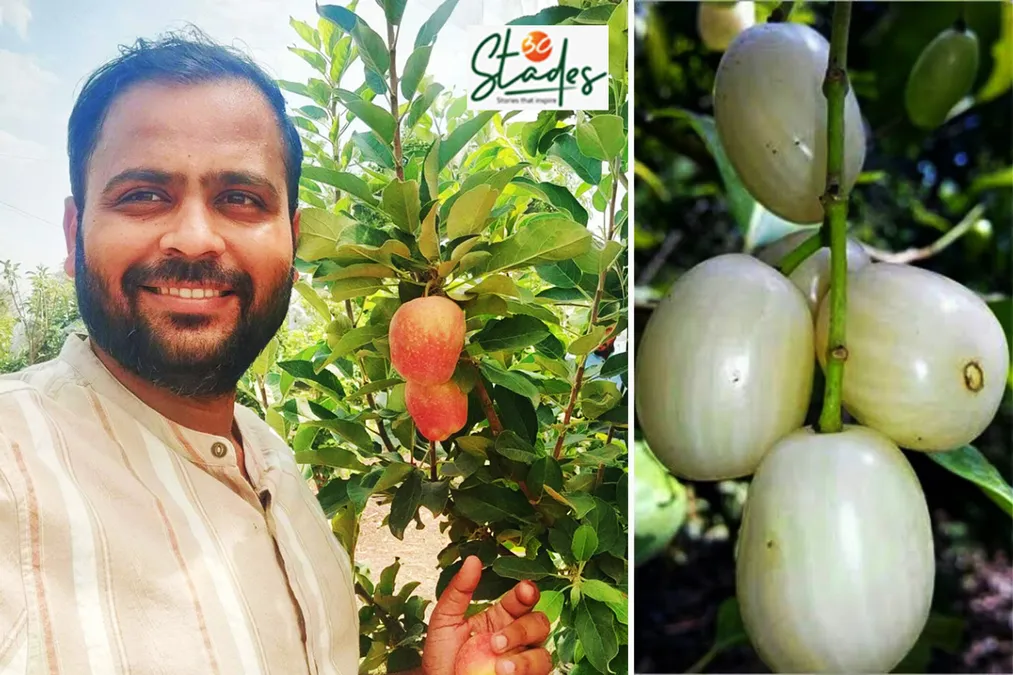On a stretch of land in the semi-arid plains of western Maharashtra, where summer temperatures regularly soar past 43°C, a quiet revolution in horticulture is underway. Vikrant Kale, a former IT engineer, has turned his two-acre farmland into a high-yielding orchard that defies climatic odds—successfully cultivating Anna apples, Thai white jamun, and other exotic fruits in a region traditionally thought inhospitable to such crops.
What began as a passion project has now grown into a model of climate-smart agriculture and economic resilience. Kale’s orchard, located in Parner taluka of Ahmednagar district, is not only commercially successful—earning him over ₹27 lakh annually—but also a hub for agritech innovation and horticulture education.
A Farmer by Choice, Not by Chance
After working for years in the information technology sector, Kale made a conscious decision to return to his roots. But unlike many who struggle in conventional farming, Kale approached agriculture with a research-oriented mindset. He studied low-chill varieties, particularly the Anna apple—a hybrid of Golden Delicious and Israeli Red Hadassiya—which can tolerate warmer climates unlike traditional hill varieties.
“People laughed at the idea of growing apples in this heat,” Kale recalls. “But I believed the climate was changing, and farmers needed to change with it.”
The gamble paid off. Today, each apple tree yields 15–20 kg per season, fetching wholesale prices of ₹100–120 per kg. His white jamun trees—imported varieties from Thailand—produce even greater returns. On one acre, Kale has cultivated over 200 white jamun trees, each yielding 20–25 kg of fruit annually. At ₹200 per kg, his revenue from this single crop crosses ₹5.5 lakh per acre.
A Nursery that Nurtures Futures
Kale’s impact extends far beyond his own profits. Recognizing the growing interest in alternative horticulture, he launched a nursery that now sells over 15,000 saplings each year, priced at ₹150 each. The nursery alone contributes ₹22.5 lakh annually to his income.
But more importantly, Kale’s orchard has become an open classroom. More than 1,000 horticulture students, farm practitioners, and agripreneurs have visited his demonstration site to learn about exotic crop cultivation, irrigation planning, soil health, and sustainable farming techniques.
He also promotes agro-tourism and believes that direct farmer-to-consumer interactions can reshape how agricultural products are marketed and valued.
Climate-Resilient Agriculture Gains Ground
Experts say Kale’s experiment is emblematic of a larger shift in Indian agriculture. As climate change alters growing conditions across regions, the lines between traditional and exotic crop zones are blurring. Farmers like Kale, who are willing to take calculated risks, experiment with rootstocks, and adopt scientific methods, are now leading a quiet agrarian renaissance.
By adapting temperate crops to tropical conditions and making exotic fruits accessible to local markets, Kale is not just rewriting farming rules—he is also redefining what is possible in Indian agriculture.


